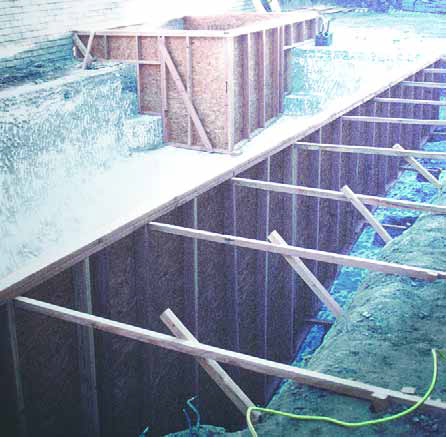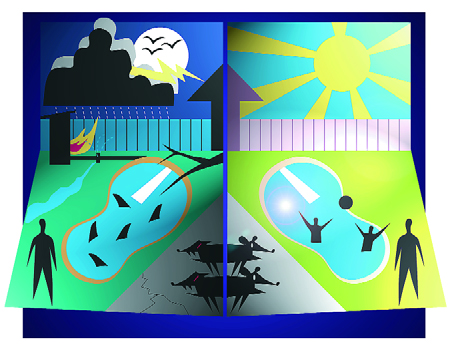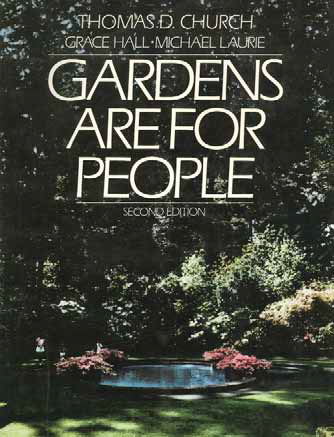Last time, I mentioned initial meetings and discussions having to do with a retrofit project in Pacific Palisades, Calif. I call it a "retrofit" because we're using a portion of an existing pool shell as part of the new one, but in truth this is really a ground-up reworking of the entire environment. This project displays the influence that architects Ricardo Legoretta and Luis Barragan have had on my thinking about shapes, colors and spatial relationships. As soon as I saw this place, in fact, the work of both came to mind because of the strong colors and materials and the expressive
Last month, we discussed ornamental grasses and their place as the most natural of all companions for watershapes. Now it's time to look at a few of your grass options, including something for just about every need and taste. Ornamental grasses come in such a wide range of sizes, climate preferences and colors that there really is at least one choice that will work in any client's yard. With so many choices, I'll have to narrow the list down to my personal favorites here. I'll also be suggesting some plants that aren't traditionally considered to be ornamental grasses; these are some "grass-like" plants I use as required to meet a particular design's needs. As always, I recommend
Is it honest to say that too few of the swimming pools you find in America's backyards are what one could call well built - and that even fewer of them are well designed? I think so, because so many of the pools I see run like junk and look like junk, and it's way too easy to find installations that lack any apparent relationship to their settings, their homes' architecture, the landscaping or any recognized
There's a natural tendency to think of artists as dreamy, distracted types devoid of any aptitude for or interest in things technical. When you study just about any art form in depth, however, you soon realize that
It's a simple notion: When designing illumination for fountains and for watershapes in general, we as designers have the opportunity to choreograph the interaction of light, sound and motion to create visually compelling experiences. Just as painters mix colors to create desired shades, moods and movement within their compositions, watershapers can use the sounds created by moving water, the water's visual effects, various materials of construction, the ambient (natural) light, any surrounding architecture and the tools of modern illumination technology to take these masterpieces to
It's not every day you get the chance to work on a project that's going to be seen around the world by millions of people for decades to come. That was exactly the opportunity that came our way in October 1999, when we were asked by the Denver Broncos to construct an elaborate waterfeature at Invesco Field at Mile High, a brand-new stadium that opened at the beginning of the 2001 football season. The project architect - HNTB Sports of Kansas City, Mo. - had developed
A grand California estate deserves a grand pool, and Cima del Mundo is certainly no exception. The new pool is part of a project that involves the complete renovation of a classic estate in the hills of Montecito, a prosperous enclave just south of Santa Barbara, Calif. In keeping with the overall theme of the project, which was described in detail in "The Crest of the World" (WaterShapes, January/February 2001, page 32), the pool has been outfitted with thoroughly
One of the first books about landscape architecture I ever read was Gardens Are for People by Thomas Church, a designer justly famous for changing the way exterior spaces are treated today - especially in the residential environment. This book was first published in 1953, but a second edition (published in 1983 by Reinhold Publishing Corp.) is still widely available in bookstores and on the Internet. The 250-plus-page book traces Church's long career, which started in California in the 1930s and lasted through the late '70s and almost to his death in 1978. His great gift was taking the art of landscape architecture and applying it to the masses. Before him, landscape architecture was
For many people in the watershaping trades, client relationships begin with selling and never really advance beyond that stage. For me, however, it's not about selling per se; instead, it's about creating a sense of collaboration and building a foundation of mutual trust and understanding. In fact, the work I do in establishing these creative relationships with my clients may well be the most important "detail" of all. In a sense, watershaping isn't a job to me. It's my passion, which explains why I'm so obsessed with






















